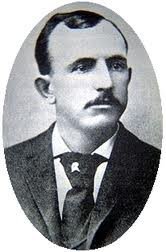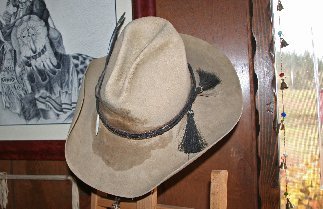Soup is a primarily liquid food, generally served warm or hot (but may be cool or cold), that is made by combining ingredients of meat or vegetables with stock, milk, or water. Hot soups are additionally characterized by boiling solid ingredients in liquids in a pot until the flavors are extracted, forming a broth. Soups are similar to stews, and in some cases there may not be a clear distinction between the two; however, soups generally have more liquid (broth) than stews.
In traditional French cuisine, soups are classified into two main groups: clear soups and thick soups. The established French classifications of clear soups are bouillon and consommé. Thick soups are classified depending upon the type of thickening agent used: purées are vegetable soups thickened with starch; bisques are made from puréed shellfish or vegetables thickened with cream; cream soups may be thickened with béchamel sauce; and veloutés are thickened with eggs, butter, and cream. Other ingredients commonly used to thicken soups and broths include rice, lentils, flour, and grains; many popular soups also include pumpkin, carrots, potatoes.
Other types of soup include fruit soups, dessert soups, pulse soups like split pea, cold soups and other styles.
The earliest evidence for soup in human culinary practice dates to the Upper Palaeolithic period when thermally altered rocks became commonplace in the archaeological record. Small boiling pits are present on the Gravettian site Pavlov VI. Cobbles were heated on the hearth and then placed into the water to bring it to boil. However, the antiquity of soup is highly contested. Based on ethnographic evidence, some archaeologists conjecture that early humans employed hides and watertight baskets to boil water.
The word soup comes from French soupe ("soup", "broth"), which comes through Vulgar Latin suppa ("bread soaked in broth") from a Germanic source, from which also comes the word "sop", a piece of bread used to soak up soup or a thick stew.
The word restaurant (meaning "[something] restoring") was first used in France in the 16th century, to refer to a highly concentrated, inexpensive soup, sold by street vendors, that was advertised as an antidote to physical exhaustion. In 1765, according to Prosper Montagné's Larousse Gastronomique, a Parisian entrepreneur opened a shop specializing in such soups. This prompted the use of the modern word restaurant to refer to eating establishments.
In the US, the first colonial cookbook was published by William Parks in Williamsburg, Virginia, in 1742, based on Eliza Smith's The Compleat Housewife; or Accomplished Gentlewoman's Companion, and it included several recipes for soups and bisques. A 1772 cookbook, The Frugal Housewife, contained an entire chapter on the topic. English cooking dominated early colonial cooking; but as new immigrants arrived from other countries, other national soups gained popularity. In particular, German immigrants living in Pennsylvania were famous for their potato soups. In 1794, Jean Baptiste Gilbert Payplat dis Julien, a refugee from the French Revolution, opened an eating establishment in Boston called "The Restorator", and became known as the "Prince of Soups". The first American cooking pamphlet dedicated to soup recipes was written in 1882 by Emma Ewing: Soups and Soup Making.
Portable soup was devised in the 18th century by boiling seasoned meat until a thick, resinous syrup was left that could be dried and stored for months at a time.
In French cuisine, soup is often served before other dishes in a meal. In 1970, Richard Olney gave the place of the entrée in a French full menu: "A dinner that begins with a soup and runs through a fish course, an entrée, a sorbet, a roast, salad, cheese and dessert, and that may be accompanied by from three to six wines, presents a special problem of orchestration".
If you want to read more, go here: https://en.wikipedia.org/wiki/Soup
The kids are back in school and there's a slight chill in the air; how about something warm and comforting for dinner? Our Hearty Chicken & Corn Soup is going to warm up your kitchen and the hearts of everyone gathered around the kitchen table. There's nothing better than a creamy soup studded with corn, spinach, potatoes, and tender chicken. This is hearty and comforting at its best.
- 1 small onion, chopped
- 2 carrots, diced
- 2 tablespoons butter
- 5 1/4 cups chicken broth
- 4 large potatoes, peeled and diced
- 3 (14-3/4-ounce) cans cream-style corn
- 1 (9-ounce) package frozen chopped spinach, thawed and squeezed dry
- 2 cups cooked shredded chicken
- 1/2 teaspoon black pepper
- In a soup pot over medium heat, melt butter; sauté onion and carrots 5 to 6 minutes, or until tender. Add chicken broth and potatoes.
- Bring to a boil and cook 12 to 15 minutes, or until potatoes are fork-tender.
- Add remaining ingredients and cook 8 to 10 minutes, or until heated through. Serve immediately.
And births this date include....

1945 – Goldie Hawn, American actress

National Gingerbread Cookie Day on November 21st encourages us to grab the rolling pin and cookie cutters. The baking will warm the home and decorating will inspire us to design tasty cookies while making memories!
National Gingerbread Day takes place on June 5. A favorite food of an Armenian monk, Gregory of Nicopolis, brought gingerbread to Europe around 992 AD and taught French Christians to bake it. Gingerbread was often used in religious ceremonies and was baked to be sturdy as it was usually molded into images of saints.
Gingerbread cookies make sturdy walls for houses (perfect for National Gingerbread House Day on December 12) and tasty gingerbread families that can be decorated by the children in your home.
HOW TO OBSERVE
Invite friends to help you bake and decorate. Get the children involved and continue family traditions. Read the story of the gingerbread man.
Host a gingerbread design contest. While everyone is decorating, be sure to provide plenty of supplies. This is still important even if you’re hosting an online gingerbread design contest. You don’t want your home team to run out of icing or sprinkles just for zoom team B to zoom ahead with an abundance of supplies. One way to keep your gingerbread designs moving is by setting up stations. Start with icing, followed by sprinkles, edible glitter, and decorative piping. Then set up a drying station. Once everyone finishes, assign bragging rights to these categories:
- Most colorful
- Cookie most likely to be mistaken for a Salvador Dali
- Neatest icing and sprinkle usage
- Best use of icing
- Best repair job
- Most original design
Everyone should enjoy a good laugh and savor their hard work with a glass of milk and a tasty cookie!















2 comments:
Reading about soup and gingerbread is a wonderful way to start the day!
I love soups and have often meant to look up the difference in bouillon and consomme. You did it for me. Thank you!
I had to chuckle about the full course meal with up to six types of wine during the meal. After that, who cares about dessert! :)
XO Trisha
Post a Comment